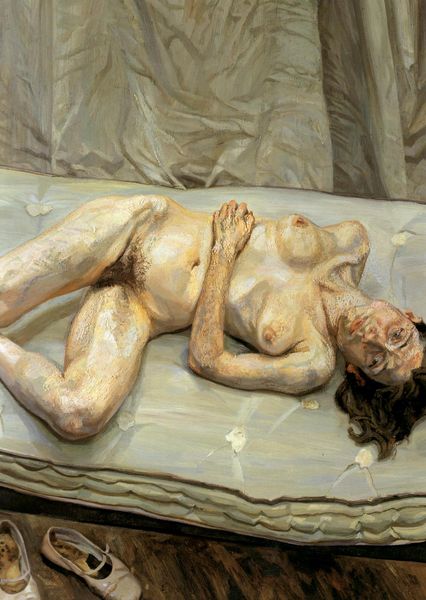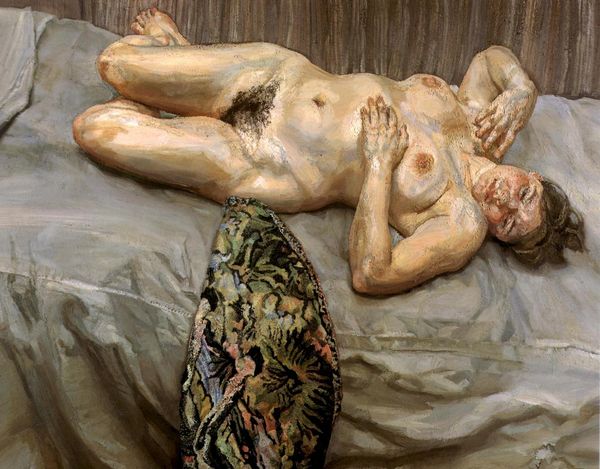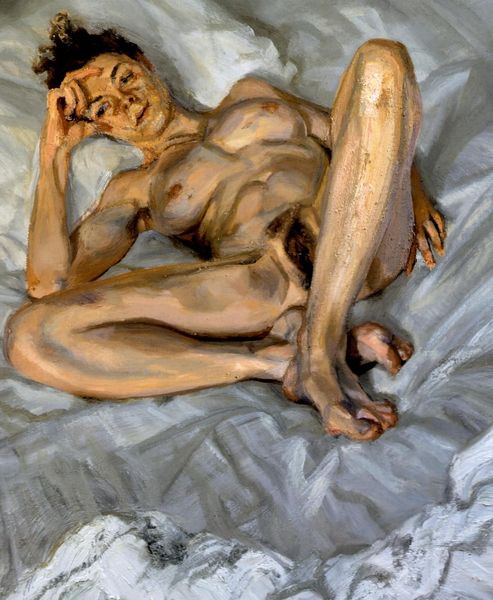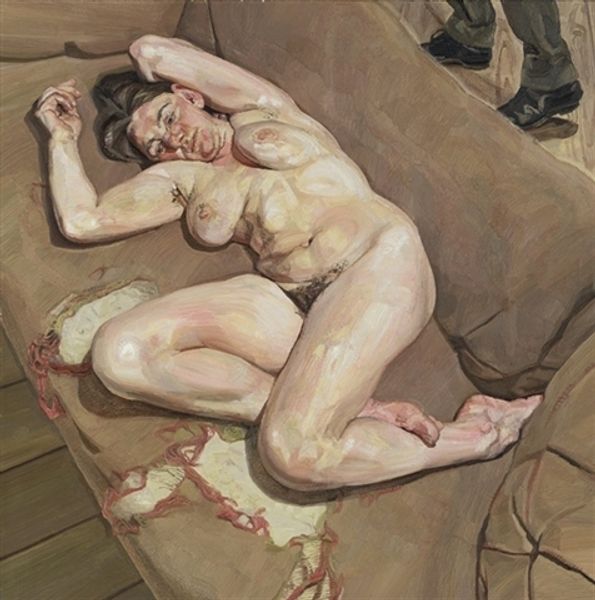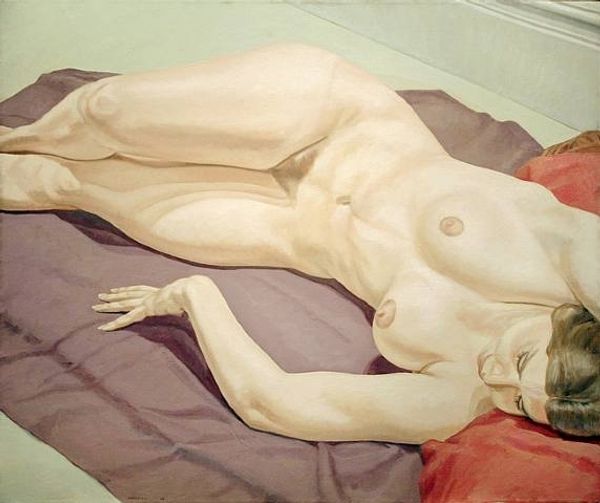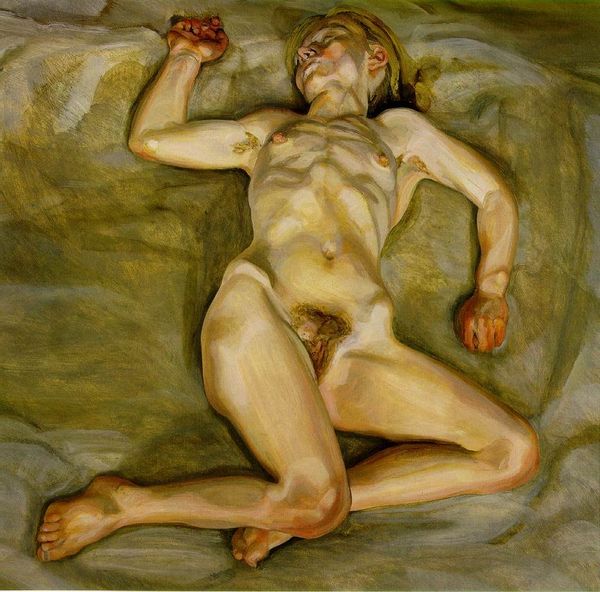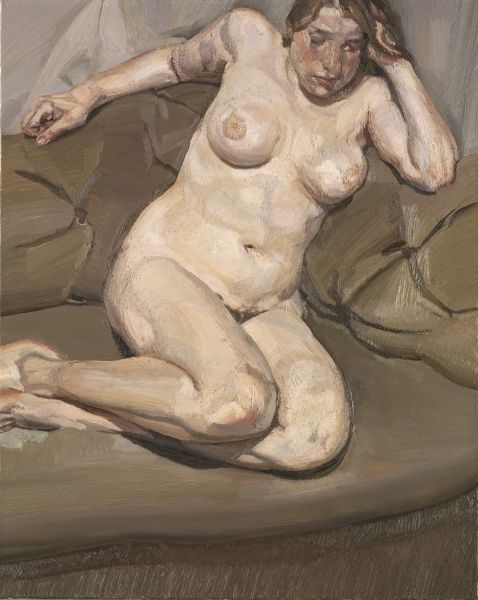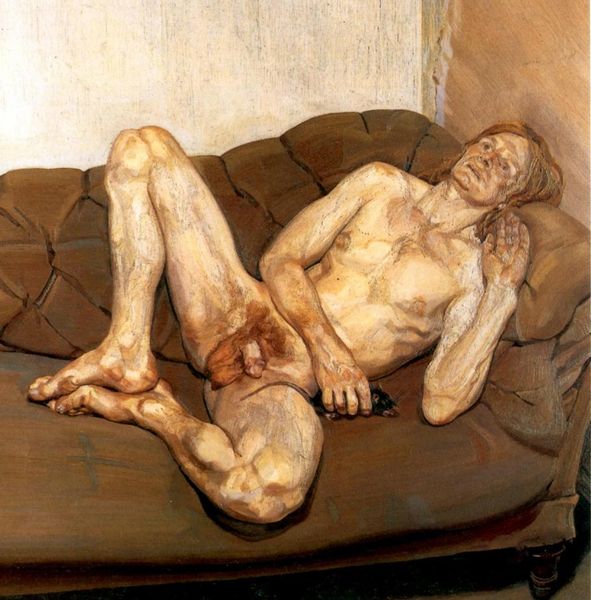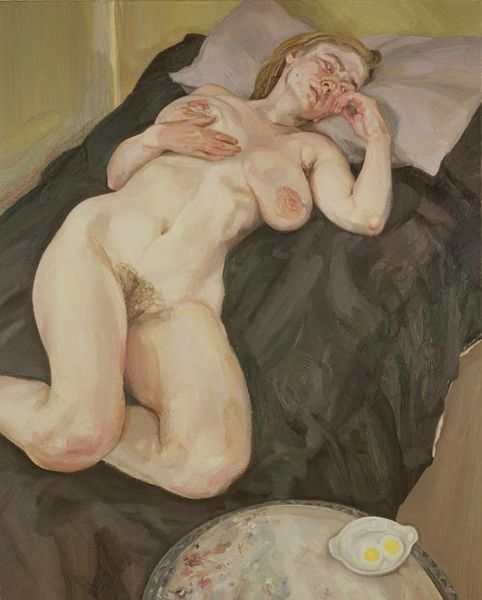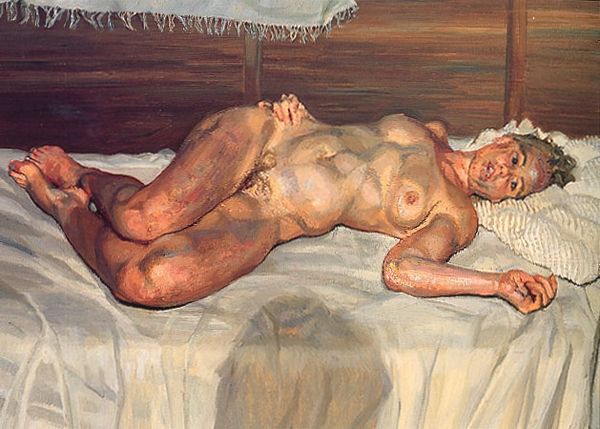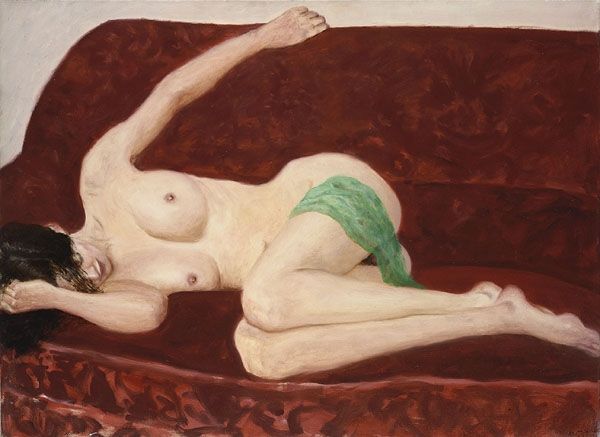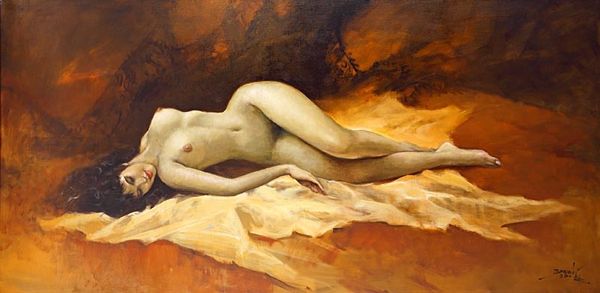
Copyright: Lucian Freud,Fair Use
Editor: Here we have Lucian Freud's "Night Portrait," painted in 1978. It's oil on canvas and quite striking. There’s a rawness to the way he’s rendered the flesh. What's your take on this? Curator: Looking at Freud's method, one notices how materiality itself conveys meaning. The thickness of the oil paint and the almost brutal application; the tactile rendering creates a very visceral image of human flesh. I think he is also showing the consumption of bodies and even class status. It reveals the physical labor of existence and raises the viewer's awareness to the subject’s corporeal reality. Do you see that rawness influencing its reception in the art market? Editor: Absolutely, the physical nature of the paint adds a certain level of… discomfort. It challenges traditional notions of the nude. So, is he elevating the everyday or is he simply being objective? Curator: Consider the social context. Freud, a German-born British artist, working in a postwar environment of austerity and rebuilding, chose to depict bodies stripped bare, devoid of idealization. The production value in the impasto and the deliberate ‘unflattering’ poses become his means of subverting traditional aesthetics and commenting on a more pragmatic social reality. Also, the material of the bedding plays a part. How might that complicate our reading of his subject? Editor: Good point. The textures almost clash with the smooth, but almost grotesque, treatment of the figure, the starkness in that position makes the image less intimate and almost confrontational. I hadn't considered it in those material terms before! Curator: Exactly, this piece becomes less about the model and more about what art represents within a consumer-driven society, wouldn’t you say? Editor: I see it now. It’s not just a nude; it’s a commentary on labor, bodies, and consumption made manifest through paint. Thanks for pointing that out!
Comments
No comments
Be the first to comment and join the conversation on the ultimate creative platform.
